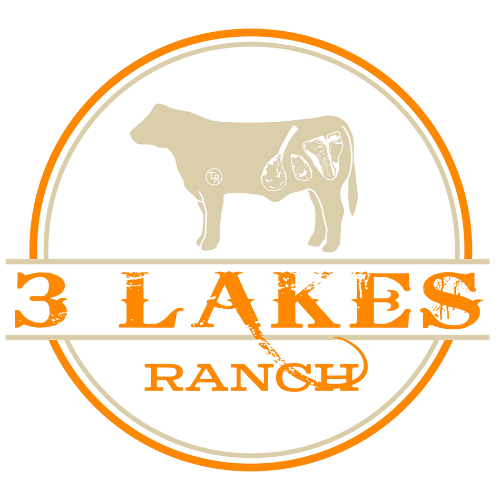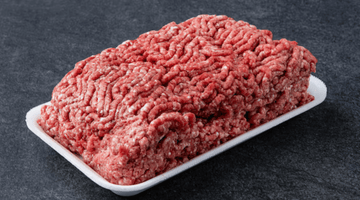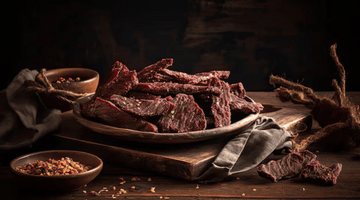
Ever wondered if the food animals eat affects the taste and nutrition of your meat?
Consider cows grazing on green grass versus cows consuming corn and soy. You must be thinking “does their diet matter?” The answer is a simple yes. What cows eat can significantly change the flavor and nutritional value of your meat. When it comes to the meat you eat, what the animal ate matters more than you might think.
In this article, we discuss in detail the fundamental differences between grass-fed and grain-fed beef, and facts about grass-fed and grain-fed beef. Later on, we shall look at the nutritional and health aspects of the two types.
What does Grass Fed Beef and Grain Fed Beef Mean?
Grass-Fed Beef
When cows are called "grass-fed beef," it means they mostly feed on hay and grass. From the time they're born until they're ready to be turned into meat, their diet comprises of natural and organic stuff.
Grain-Fed Beef
On the other hand, "grain-fed beef" means cows are given a diet that includes grains, often corn or soy. This can be either to add to their hay and grass they fed on or closer to their end-of-life stage before they're turned into beef.
What are the Key Differences Between Grass Fed Beef and Grain Fed Beef?
Grass-fed beef and grain-fed beef exhibit distinct differences across various aspects.
In terms of diet, grass-fed beef primarily relies on natural sources such as grass, hay, and pasture for sustenance. On the other hand, grain-fed beef predominantly consumes grain-based feeds, often including corn and soy. This dietary distinction contributes to variations in flavor, texture, and nutrient profiles. Let us now look at each of these aspects in depth.
Also Read: Beef Nutrition facts and Health Benefits
Differences in fatty acid composition
The adage "you are what you eat" also applies to cows.
The nutrients in beef can vary greatly depending on what a cow consumes. This is especially clear when looking at the fatty acid content.
Grass-fed beef often has less total fat than grain-fed beef, which implies that it has less calories per gram. However, the composition of fatty acids is also different:
Monounsaturated lipids: Compared to grain-fed beef, grass-fed beef has significantly less monounsaturated fat.
Polyunsaturated omega-6 fatty acids: Omega-6 fatty acid content in cattle raised on grass and beef raised on grains is pretty comparable.
Omega-3s: Here, grass-fed is much superior due to its up to five times higher omega-3 content.
CLA, or conjugated linoleic acid: About twice as much CLA is present in grass-fed beef as it is in grain-fed meat. A few health advantages are linked to this fatty acid.
In conclusion, the composition and quantity of fat in cattle grown on grass vs beef fed on grains varies significantly.
Additionally, the breed and cut of meat have a big impact on the fat content in cattle.
Grass-fed beef is more nutritious
Beef that has been raised on grains or grasses is a highly concentrated source of nutrients. B12, B3, and B6 vitamins are abundant in beef. Also abundant in it are high bioavailable amounts of iron, selenium, and zinc. In actuality, practically every vitamin required for survival is present in meat.
Additionally, it has high-quality protein and a number of lesser-known nutrients like carnosine and creatine, which are crucial for the health of your muscles and brain.
But even if there isn't much of a difference, grass-fed beef often has greater levels of several nutrients. Grass-fed beef has much more of the following vitamins than grain-fed meat does:
A vitamin Beta carotene and other carotenoid precursors to vitamin A can be found in grass-fed beef.
Your cell membranes include the antioxidant vitamin E, which keeps them from oxidizing.
Is grass-fed beef worth the extra cost and potential inconvenience?
It's crucial to remember that standard, grain-fed beef is still quite healthy.
Beef is a nutrient-dense item that may be a component of a balanced diet, provided you don't overcook it, which can result in the development of hazardous chemicals.
In the US, grass-fed beef can be more expensive, and for some consumers, the additional expense may not be justified.
Purchasing grass-fed beef could also be difficult depending on where you reside.
Some folks might be able to get grass-fed beef without traveling far from their homes because they live close to a farmer's market or a whole foods store.
There may also be minute variations in flavor. Grass-fed beef may have a distinct texture and is frequently leaner.
Despite the fact that grass-fed beef has greater concentrations of several nutrients, there is presently no convincing data to support the claim that, when included in a balanced diet, it is much healthier than grain-fed beef.
The decision ultimately comes down to your interests and principles. While some individuals like grain-fed, others favor grass-fed. Try both and decide which you prefer.
How Does Grass Fed Beef and Grain Fed Beef Taste?
In the United States, grain-fed beef typically involves a diet blend containing corn, soy, and even corn by-products like husks and cobs. This mixture, perfected over around 75 years, accelerates beef cattle growth. Corn-based diets result in more marbling, enhancing beef with a subtle sweetness.
On the other hand, grass-fed beef cattle graze on grass and various other plants that grow on the ground, like bushes and thistles. This aligns more with their natural diet. Grass-fed steaks offer a distinct mineral-rich taste often described as "meatier" or "gamier," which also mirrors the texture commonly attributed to grass-fed beef.

Though there are exceptions, most Americans tend to favor the sweeter and more robust taste associated with corn-fed beef. This preference is a key reason why leading steak brands and restaurants continue to highlight their offering of corn-fed steaks, catering to the prevalent taste inclination.
What is the Texture of Grass Fed Beef and Grain Fed Beef?
When it comes to texture, both grass-fed and grain-fed beef have distinct characteristics that set them apart. For example, grass-fed beef feels leaner and firmer when you bite into it.
This happens because cows eat grass and plants naturally. The meat doesn't have as many streaks of fat inside, which is called marbling. That's why it might seem denser and a bit more structured as you chew. It is more “meatier" or "gamier."
On the other hand, grain-fed beef is different. It's all about marbling. As the cows feed on corn and soy, their diet creates lines of fat in the meat that you can see. This kind of fat makes the beef tender and buttery when you eat it.
As you cook, those fat lines melt, making the meat even juicier and softer. So, when you take a bite of grain-fed beef, it's smoother giving you a rich sensation in your mouth.
Which is Healthier Grass-Fed Beef or Grain Fed Beef?
Grass-Fed Beef: Grass-fed beef is often seen as a healthier choice. Cows eat natural things like grass and plants. As a result, its flesh is leaner and has more beneficial components like vitamins and omega-3 fatty acids. For the human body, omega-3 fatty acids are like exceptional assistants.
They can improve cognitive function, lower inflammation, and keep your heart healthy. Therefore, by choosing grass-fed beef, you are supplying your body with more of these healthy fats and nutrients.
Grain-Fed Beef: The situation is different with grain-fed beef. Cows eat soy and grain, which can increase the fat content of their meat. This suggests that cattle raised on grains may have higher marbling or visible lines of fat. Although it might be tasty, it might not be as healthy as beef from grass-fed cows.
In summary, grass-fed beef has a number of advantages. It provides a healthier option that supports heart health, lowers inflammation, and improves cognitive function because it is rich in omega-3 fatty acids and vitamins. By choosing grass-fed beef, you're providing your body with these healthy nutrients, which can have a significant positive impact on your general well-being.

Grass Fed Beef vs Grain Fed Beef Nutrition Chart
Comparing the nutritional content of grass-fed and grain-fed beef reveals interesting insights. For example, take a look at the following table.
|
Nutrient |
Grass-Fed (100 g) |
Grain-Fed (100 g) |
|
Protein |
21.8g |
22g |
|
Zinc |
3.7mg |
3.8mg |
|
Iron |
1.8mg |
1.6mg |
|
Total Fat |
2.9g |
5.2g |
While both grass-fed and grain-fed beef offer similar levels of protein, zinc, and iron, it's noteworthy that the fat content in grain-fed beef is notably higher than in its grass-fed counterpart. Therefore, opting for leaner grass-fed beef not only provides essential nutrients but also aligns with healthier fat levels.
By choosing grass-fed beef, individuals can make a positive impact on their health by reducing saturated fat intake and supporting overall well-being.
Why Choose 3 lake Ranch for Buying Grass Fed or Grain Fed Beef?
When it comes to choosing the best beef for your table, there's no better place than 3 Lakes Ranch. Since we place a strong emphasis on establishing an organic and natural way of life for our cattle, you won't find any grain-fed methods used at our ranch.
Further, we ensure that our cattle are not just healthy, but also hygienic to ensure your health. At 3 Lake Ranch, we offer both grass-fed and grain-fed beef.
Buy Grass fed beef!





